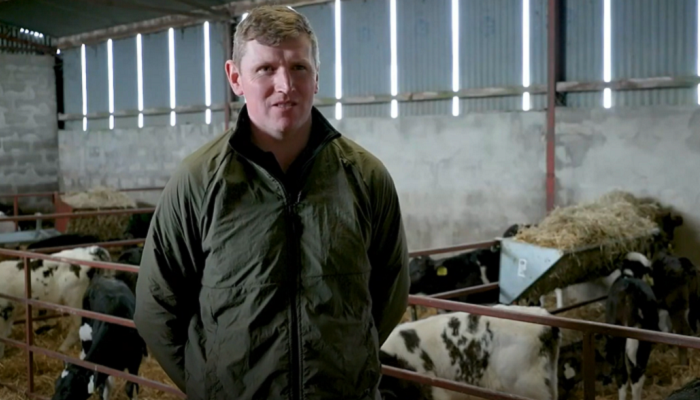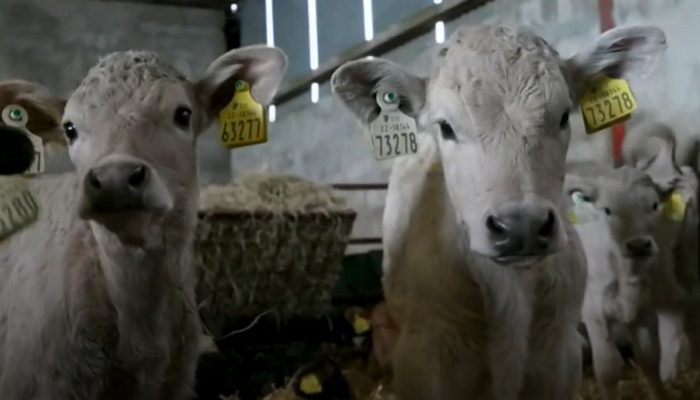29 March 2024
Maximising beef calf potential through sexed semen use

Farming in Ballytarsna, Co. Tipperary, John Dwyer has placed a firm focus on using sexed semen to not only ensure the production of high EBI dairy replacements but to also maximise the potential of the beef progeny being produced from his herd.
Joining the recent Efficient Dairy Breeding Webinar, produced as part of Teagasc Breeding Week 2024, John outlined how sexed semen is used on his high EBI herd, from which 520kg of milk solids were produced per cow in 2023.
With an average EBI of €245 for cows in the herd, John’s breeding policy revolves solely around AI usage; no stock bull has been present on the farm for the past 7-8 breeding seasons.
With breeding planned to commence on April 29 and a fixed time AI programme being used for heifers on May 1, John explained: “All sexed semen will be used on the top 50% of the cows this year and then 80-90% of heifers will be getting sexed semen with beef bulls used on the lowest EBI heifers.”
A compact calving season is desired, with 90% of the cows targeted to calve in a six-week window. Along with this, John has strived to tighten the length of the total calving season; an 11-week breeding season was completed in 2023.
Pre-breeding checks and a tight breeding season
On his plan for pre-breeding checks, John said: “We will tail paint all the cows on April 1 and do a pre-breeding recording for three weeks. Any cows that haven’t been seen cycling before the mating start date, we will get the vet out to check those cows over and try and get them cycling as quickly as possible.”
Cows which have failed to come cycling within this three week window are automatically removed as candidates for sexed semen straws and will instead receive a beef straw, as John wants to maximise the conception rates from sexed semen in the selected cows.
Commenting on why he’s decided to limit the breeding season to 11 weeks, John said: “The main aim is to get a break between the end of calving and the start of breeding in April to have a two week window where there’s a gap where you can reset and then get into the frame of mind for the breeding again.
“We have 10 cows left to calve and half of them will be calved by the end of next week and the last five will be calved before April 10 hopefully. That will leave us with the bones of three weeks there where we can concentrate on pre-breeding heat detection and to start thinking about breeding.”
Beef sires and earlier heifers
The use of sexed semen means that heifers generally come earlier in the calving season on John’s farm, as female sorted straws are generally used for the first 10 days of breeding. This allows for heifer calves to be bunched early in the season and it allows for the creation of a uniform group of stock for management as year one and year two animals, something John sees as beneficial in getting the heifers to calve for the first time at 22-26 months of age.
The introduction of sexed semen has also allowed for a greater choice of beef bull to be used on farm and a targeted approach is being used to match the suitable beef sire to the suitable cow. Cows in their third lactation and over were mated with a Belgian Blue, Charolais or Limousin sire during the first part of the breeding season last year. These sires had calving difficulties of 5-7%. As the breeding season progresses, short-gestation sires – such as Angus and Hereford – are used to maintain the herd’s calving interval.

On his beef breeding policy, John said: “I am using the high DBI bulls. I’m trying to select more on carcass, trying to get a bigger frame of a calf. I had no difficulty this year with calving. Our calving ease was fine. I would sell a lot of the bull calves here off farm at 3-4 weeks of age. I have a few neighbours that buy bulls off me here and I’m trying to improve the stock as much as possible to have repeat customers.
“We are trying to keep improving the quality of the beef calves that we have coming off the farm here, looking at the different traits of the bulls – the kilograms of carcass and calving ease and gestation all those things are coming into play,” John said.
For more on John’s breeding policy, watch a recording of the Efficient Dairy Breeding Webinar below:
Also read: Breeding Week 2024: A refresher on sexed semen
Also read: Breeding Week 2024: Understanding the maintenance sub-index
Also read: A trilogy of tools to aid dairy-beef breeding, mating and trading
Also read: Breeding Week 2024: Developing a breeding plan for your farm
